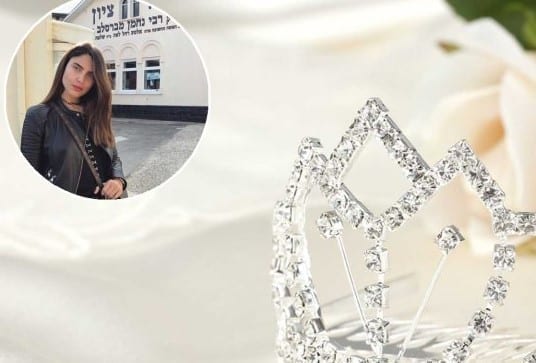Esther Goldberger wasn’t always known as Esther Goldberger. Growing up in her native São Paolo, Brazil, she went by her birth name, Maria Patricia de Souza. The women in Esther’s Baptist family had a talent for dressmaking and were constantly working magic with needle and thread. They also had a number of odd rituals that were, they believed, “signs of good luck.”
In reality, they were traditions that had been passed down for hundreds of years, dating back to when her mother’s family had lived as Marranos in Portugal before being expelled during the Inquisition. Esther, however, was unaware of her Jewish roots, but was always a spiritual seeker. She was very involved in the Baptist church to which her family belonged, eventually becoming a teacher in its Sunday bible school. When she reached adulthood, Esther took a secretarial position in the church because after years kneedeep in fabrics and patterns, “I knew I was going to hate dressmaking!”
In her late twenties, Esther began finding a number of contradictions in what she had been taught by the Church, but couldn’t find answers to her questions from anyone. She began researching the history of the Church, which inevitably led her to the history of the Jews. “I wrote everything down with all the references,” Esther recalls, but when she approached a pastor with her notes, “he took my questions and never gave them back!” Eventually, she decided to leave the church.“I read about all the different ‘isms’,” Esther says, “but when I got to Judaism, I said, ‘This is where I want to stay.’” Esther decided to move to Israel to study Judaism and to convert. Leaving the church was not a simple choice.
It meant walking away from the center of her personal, professional and family life. “Sometimes,” Esther says, “I spent weeks without anyone calling me. I was totally alone.” Her parents were devastated by Esther’s decision to become Jewish. “My mother suffered,” Esther says. “She had an identity crisis.” Especially when Esther told her parents she had met an Orthodox Jewish man from Canada named Abie Goldberger and was going to marry him.
Fast forward a few years, and Maria Patricia de Souza had become Esther Goldberger, Jewess, graduate of She’arim seminary in Har Nof, wife of Abie and Canadian citizen. She had, in an alarmingly short time, exchanged her country, culture, language and religion. And yet, the drastic change seemed a fair trade-off to Esther, whose focus was on the life of Torah she wanted. “I never looked at what I lost…I was doing it for what I really wanted.” Esther, who speaks Portuguese and English, found herself virtually unemployable as a new resident of Montreal, where the first language is French. “I thought, ‘Oh, my goodness! I fought so hard to learn English, and now that I’ve learned the language I move to a place where English isn’t spoken!’” recalls Esther. Needing work that required little talking or writing, Esther decided to take up the family business: fashion design.
After getting her degree from LaSalle University’s fashion school, Esther, who was now approaching 40, realized that she had tough competition for an internship in Montreal’s “tiny” fashion community. Instead of trying to elbow her way up the ladder, she decided to open her own company. Esther envisioned a line of modest clothing that was light and easy, what Esther calls “five seconds to wear—just put it on and go and be merry.”
Part of her inspiration for the line was her discomfort in layers of clothing when the weather was warm. “In Montreal, where it’s cold except for three months of the year, dressing tznius is a pleasure,” Esther says. “But when we went away and it was boiling hot and…I couldn’t wear layers, then came the idea: Wow. What if I made very light dresses?” She got to work, reading and gathering information, making samples and shopping for fabrics. Six months later, in May 2013, DellaSuza was born.
In the past year, Esther has built a line unique in its use of color, inspired by the city of Miami, Florida. “We go there every year, and I just love that place. It’s so colorful and the people are so happy.” It certainly seems to speak to her customers, who contact Esther from across the world, thanks mostly to word of mouth. “Whenever someone wears [one of my dresses] to a party, someone always asks, ‘Where did you get that?’ Because you can’t find [anything like] that in stores.” And, Esther says, the feedback consistently shows how much they love her dresses: After a year in business, she has never had a return.
Taking up her family’s dressmaking tradition has made Esther’s mother, who has since “recovered” from her daughter’s conversion, very happy.But, Esther says, her career choice was inevitable. “Even in an alternative reality, if I wasn’t Jewish and I was living in Montreal, I would [still] have ended up making clothing…This is something that was inside me. My family did it and I knew I would end up doing it.” An “elegant” example of art imitating life, Esther’s work, like Judaism, was already in her blood.





